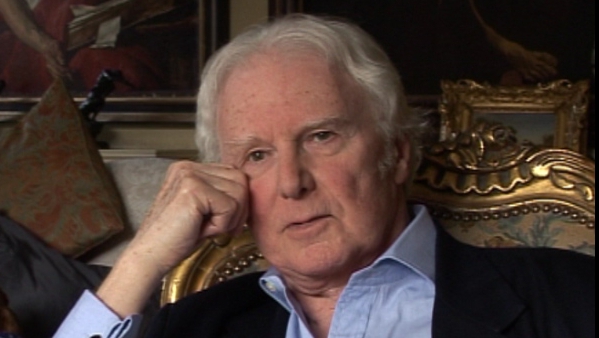NEXT STORY

The influence of World War I on John Singer Sargent's art
RELATED STORIES

NEXT STORY

The influence of World War I on John Singer Sargent's art
RELATED STORIES


|
Views | Duration | |
|---|---|---|---|
| 1. John Singer Sargent as a painter of the aristocracy | 1213 | 00:58 | |
| 2. The difference between a great painter and a good painter | 959 | 03:40 | |
| 3. Great monuments of the 20th century | 699 | 03:18 | |
| 4. The influence of World War I on John Singer Sargent's art | 478 | 01:12 | |
| 5. Is love a mental illness? | 2 | 632 | 02:10 |
| 6. Falling in love with a boy from the Hitler Youth | 1 | 701 | 04:12 |
| 7. My three parents | 542 | 01:39 | |
| 8. A 1930s child | 438 | 02:10 | |
| 9. Highly educated in all the wrong areas | 584 | 00:55 | |
| 10. An education provided by trips to museums | 435 | 02:02 |

Gassed is one of the great monuments of the 20th century, I think. It not only is a record of something that happened in the war, inevitably his role as a war artist coming into play, but I think the way the figures stay in a plane, just within the picture space, right across, is a classical relief. It has, for me, the resonances of all those Roman triumphs in which prisoners are... bowed heads, drawn across the picture plane from left to right.
Painting it the way he does, in little groups within the group, and then allowing you to see other things through these various interstices, like the football match and the aeroplane skirmish up there. And the football match is just a symbol of perhaps the indifference of man to man. Because the football had been played by people with all their limbs and their eyes and able to breathe, and the people in the frieze are those who have been gassed and are possibly never going to see anything again. Or it’s a contrast between what could be, for them, what has been for them, and what is now impossible. There are all sorts of ways of interpreting that little paradox. I think it’s a great painting. Two great works of art came out of the Great War in Britain. I don’t think any came out anywhere else. And Gassed is one. And the other is the Charles Sargeant Jagger Artillery Memorial at Hyde Park Corner, which I think is one of the greatest works of art of the century, not just of that particular episode.
The extraordinary architecture of that cenotaph... because like the cenotaph in Whitehall, it is an empty tomb, it is a cenotaph. And the figures around it, and the symbolism and so on. It’s wonderful. Nobody ever looks at it. You can’t really see it unless you’re on a top of a bus, but you never see anybody standing and looking at it. If I were a millionaire, I would propose offering money to move it to somewhere where there is some repose, then people could circulate round it. Because it’s… it’s very three-dimensional, and you need to keep walking around it. You need to see each side, because each side... each end, tells a different story. And it’s all part of the same story. You need to see it all at once. And you simply cannot see the road side at the same time as you see the others.
Born in England, Brian Sewell (1931-2015) was considered to be one of Britain’s most prominent and outspoken art critics. He was educated at the Courtauld Institute of Art and subsequently became an art critic for the London Evening Standard; he received numerous awards for his work in journalism. Sewell also presented several television documentaries, including an arts travelogue called The Naked Pilgrim in 2003. He talked candidly about the prejudice he endured because of his sexuality.
Title: Great monuments of the 20th century
Listeners: Christopher Sykes
Christopher Sykes is an independent documentary producer who has made a number of films about science and scientists for BBC TV, Channel Four, and PBS.
Tags: Gassed, World War I, Royal Artillery Memorial, Hyde Park Corner, Whitehall, London, The Cenotaph, John Singer Sargent, Charles Sargeant Jagger
Duration: 3 minutes, 18 seconds
Date story recorded: 2008
Date story went live: 28 June 2012